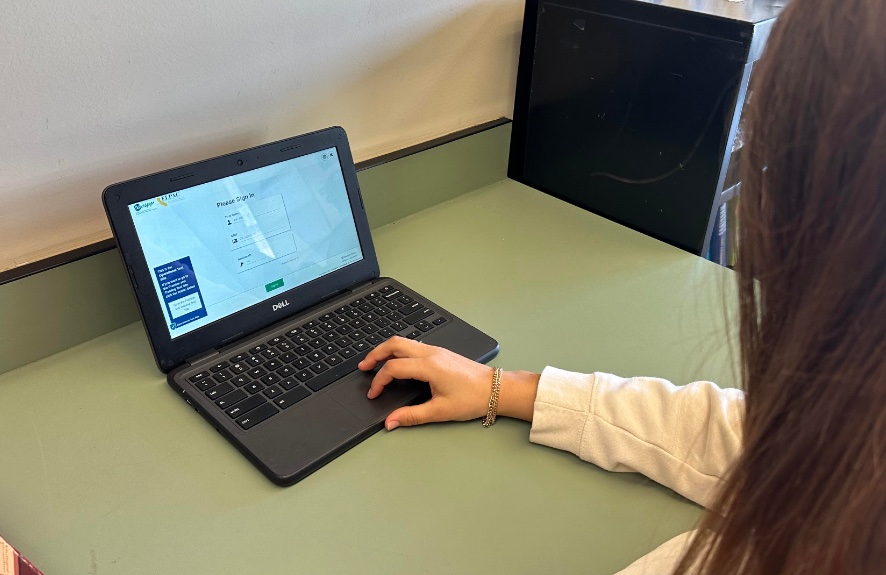How CAASPP testing affects both students and staff
A student reads the sign-in page of the CAASPP testing Secure Lockdown Browser.
March 23, 2023
Spanning the entire month of March, state CAASPP testing took place at Amador. Although juniors were the only class participating, the whole Amador community was impacted because of these tests as a new block schedule was created for these three weeks.
“The hardest thing about two hour periods is just being mindful that my students are sitting for two hours in all of their classes. It means really getting creative with the time,” said Jill Battilega, a social studies teacher at Amador.
With many sacrifices to the schedule made, faculty and students had to accommodate 120-minute periods, adjusting their lesson plans and even incorporating breaks to give students time to recharge.
“It’s hard because [I’m asked] give up almost 400 minutes of my content and my skills and my time with my students to proctor [the CAASPP],” said Battilega.
Students and teachers alike wondered if there were any benefits to testing, considering the great measures the school has to go to in order to make testing days work.
“For me, as a social studies teacher, I look at the ELA scores. We look at where students are strong in skills, we look at where students are deficient in skills and we really do think about that when we sign off,” said Battilega.
With many complaints from students, some faculty members acknowledged the fact that the timing was off, and to include this process during such a strenuous academic year comes with its own complications.
“They’re asking juniors to take tests in a year that is already their most rigorous and test dominant. Lots of students are already taking the ACT or the SAT. I feel like it hits a population that is drained,” said Battilega.
To get out of the testing, some students requested to be opted out while some even chose to race through the test without putting in adequate effort.
“I think it suffers from the fact that it’s very difficult for many students to see the direct incentive to perform well. It’s very hard to quantify student ability in a standardized way,” said Mark Kushner, AP Psychology and Civics/Economics teacher at Amador.
With mixed opinions all around, some students are able to recognize the potential benefits of this testing system.
“The main benefits of the test for me are probably that you can try to see where you stack up against other schools generally and track your scores from the past,” said Alex Brooke (‘24).
Naturally, test-takers and proctors wonder if there are any ways to improve the system. A better way of testing high school students could mean less bizarre scheduling and less stress on students.
“I think it would be more reflective to see a child’s body of work than any one particular assessment. I understand that logistically that’s a very difficult thing to do, but that doesn’t cancel out the fact that there are inherent limitations to understanding where a particular student is at simply from one score,” said Kushner.





